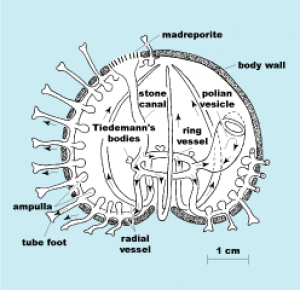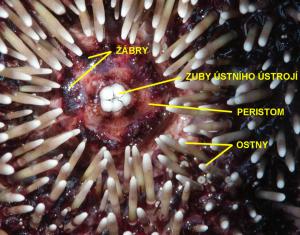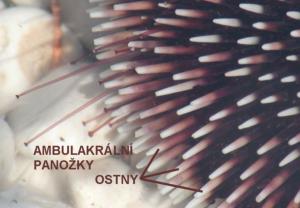Echinoidea (Echinoids)
Sea urchins are members of the phylum Echinodermata, which also includes sea stars, sea cucumbers, brittle stars, and crinoids. Like other echinoderms they have fivefold symmetry (called pentamerism) and move by means of hundreds of tiny, transparent, adhesive "tube feet". The symmetry is not obvious in the living animal, but is easily visible in the dried test. "Echinodermate" means "spiny skin" in Greek.Specifically, the term "sea urchin" refers to the "regular echinoids," which are symmetrical and globular. The term includes several different taxonomic groups: the order Echinoida, the order Cidaroida or "slate-pencil urchins", which have very thick, blunt spines, and others. Besides sea urchins, the class Echinoidea also includes three groups of "irregular" echinoids: flattened sand dollars, sea biscuits, and heart urchins.
Together with sea cucumbers (Holothuroidea), they make up the subphylum Echinozoa, which is characterized by a globoid shape without arms or projecting rays. Sea cucumbers and the irregular echinoids have secondarily evolved diverse shapes. Although many sea cucumbers have branched tentacles surrounding the oral opening, these have originated from modified tube feet and are not homologous to the arms of the crinoids, sea stars, and brittle stars.
Zdroj http://en.wikipedia.org/wiki/Echinoidea | ||
Virtual museum of the Czech Geological Survey, www.geology.cz, (C) Czech Geological Survey, 2011, v.0.99 [13.12.2011]


![[ENG]](img/vlajka-cr.gif) Česky
Česky 




